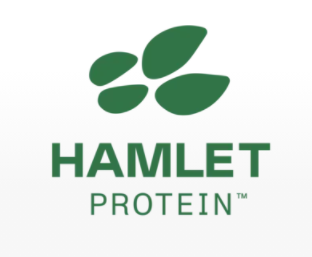



Minimizing oxidative stress with the right protein choice
Feeding trial shows a link between high quality protein, reduced oxidative stress and improved piglet performanceWeaning is a stressful time in the life of young piglets, and not just because it’s the time when they are separated from the sow. Their diet changes too, from easily digestible milk to plant-based feed which is much harder for their immature digestive system to break down and absorb. This is the age when piglets are most at risk of oxidative stress – and when, according to findings from a new feeding trial, high quality, highly digestible soy proteins benefit performance and give the best returns.
What is oxidative stress, exactly?
Oxidative stress can result from all kinds of continuous or temporary strain through the life of a high-performing animal. Even small changes in energy metabolism, immune response, pro-oxidizing inorganic compounds and mycotoxins can upset the delicate balance between the animal’s radical defense system and the quantity of free radicals. All impacts of this kind are recognized factors for oxidative stress (Stahl & Sies, 2011). Most disorders in animals and humans are believed to be linked to the formation and metabolism of free radicals (Berra et al., 2010).
When oxidative stress occurs, pathogens can enter the body more easily, with the potential to trigger illness and disease. Inflammatory processes may also be influenced as oxidative stress modifies the expression of proinflammatory genes and the production of proinflammatory cytokines and vice versa (Dröge, 2002).
Piglet symptoms – and the role of feed
During piglet weaning, the typical growth dip and increased susceptibility to disease have been described as post-weaning stress syndrome (Campbell et al., 2013). It is at this time that piglets often face an extra stressor in the form of a poor quality feed with a high content of oxidized fatty acids and free radicals or antinutritional factors (ANFs) such as soy antigens, which trigger inflammation in the gut.
The first symptoms of oxidative stress are decreased immunity, muscle degeneration, loss of appetite, diarrhea, liver damage and apoptosis (cell death).
Two ways to avoid an imbalance
When gut inflammation occurs, the animal’s own radical defense system responds by attacking the cause. However, if the radical defense system is activated in this way over a prolonged period, further inflammation or cell death will occur due to free radical formation. The ideal situation, then, is to avoid an imbalance in the first place.

A common way to do that is to add an extra dose of vitamin E or C and selenium or phytogenic additives to the feed. Alternatively, you could use a better feed with high quality, easily digestible protein that is low in ANFs and eliminates the need for further additions.
The best feed for reduced oxidative stress
Soy-based proteins are widely accepted in weaning diets. But, depending on the production process, these proteins may still contain a high level of soy antigens such as glycinin and ß-conglycinin – ANFs that are known to cause inflammatory responses (Chen et al., 2011) and oxidative stress (Lugrin et al., 2014). The best starting point for a weaning piglet is to ensure these substances are not present in the feed.
This was documented by the China Agricultural University in Beijing in a recent study of HP 300 from HAMLET PROTEIN (Ma et al., 2018). Here, weaned piglets fed a starter diet containing HP 300 – a specialty soy protein with a low ANF content – were seen to have a better oxidative status than piglets fed a diet containing soybean meal, fermented soy or soy protein concentrate. Another important finding was that the piglets in the HP 300 group had the best growth performance and the lowest incidence of diarrhea.


What the study measured
Oxidative status was measured by testing gluthathion peroxidase (GPX) and superoxide dismutase activity (SOD), which are indicators of antioxidative capacity. These enzymes are considered main components of the endogenous radical defense system. In this case, the greater the enzyme activity, the higher the antioxidative capacity – and the better the oxidative status.
The study also measured malonyldialdehyde (MDA) level, which is a strong indicator of lipid peroxidation and, consequently, the level of cell damage by free radicals. Piglets fed HP 300 had the best score on both counts compared to other soy proteins and performed on a similar level to fish meal.
The best return on investment
Many studies have confirmed that protein quality and digestibility are crucial considerations when formulating the optimum feed for weaning piglets. The findings of the latest feeding trial are an interesting indication that oxidative status, growth performance and the occurrence of diarrhea are all linked to the choice of protein – and that the highest quality protein gives the best all-round results.
Soy proteins with a high antigen content may be cheaper to buy but are more likely to compound oxidative stress. In other words, initial cost savings are likely to be cancelled out by production losses or the need for antioxidant additives.
While the findings from one trial are not enough to draw a reliable conclusion, it seems that high quality proteins could reduce the additives used to improve piglet performance and oxidative status. Further trials are necessary to find out.








